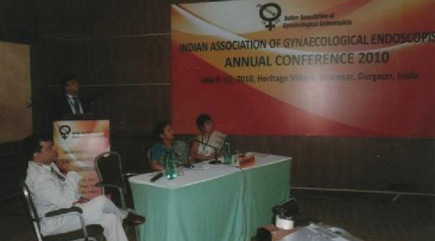Kshatriya Hospital
Achievement / Accomplishment of Vaginal delivery at maximum rate with optimum outcome
In a normal labour vertex presentation is essential hence in this study,
- Criteria of inclusion
- Vertex presentation
- 37 week completed
- No previous scars
- No disproportion
- Criteria of exclusion
- Vertex of 38 weeks
- Mal-presentation
- Previous scar
- Heart disease
- Grandmulti
- Prematurity
- Severe IUGR
- Severe Oligohydromnious
- Multiple pregnancies
- Placental insufficiency of unknown cause
- Study period Jan 2002 to Jan 2012
- Number of cases 2230 over a period of 10 years.
- Material
- Cases attending antenatal clinic
- Clinical route investigation biophysical and biomedical examination is done
- Foetal biometry by USG shows a BDP 89mm corresponding to 37 week (Wexlers. Fuchs. C Golana.et al) where in the period of gestation has been corrected by history of LMP and USG. [From text Practical Guide of High risk pregnancy and delivery II Edition Fernando Arias]
- Method
- Clinical examination
- PV examination (Per Vaginal)
- Muller Munokerr Test to R/o CPD where the head is not engaged
- Clinical pelvimetry of midpelvic and outlet is done
- Bishop's score is evaluated, majority of the cases Cervix were unripe and Bishop's score was less than 8.
All these selected cases where induction of labour was indicated were admitted. - Indications for Admission
- Mild pre eclampsia
- Severe pre eclampsia
- PROM
- Irritable uterus not responding to tocolytic
- Mild oligohydromnious
- Mild IUGR
- Decreased foetal movement
- Retroplacental clot
- History of threatened abortion in first & second trimester
- BOH
- Previous unexplained IUD
- Type I and type II anterior placenta previa
- Procedure of Induction
50µg misoprostol placed in posterior fornix - Monitoring
General Condition and abdominal examination every 30 minutes, per vaginal exam every 4 hours and continuous foetal heart monitoring. - Partogram
Plotting on partogram, tablet inserted at 11 AM around 4 PM that is 5 hours, Cervix was fully taken up and OS was 4cm dilated, head used to get engaged if not engaged before.
Membrane was bulging tensely, ARM was done, the active stage of labour used to last for 6 hours in multi and 7 hours in primigravida.
The 4% cases, Ventouse were applied for incomplete rotation of the head. No case required oxytocin augmentation and no patient required analgesic.
Uterine dysfunction, obstructed labour, APH, cordprolapse and caesarean section and forceps were not encountered. - Outcome
The babies Apgar was good at birth and after 5 minutes. Babies were followed up for 10 years by the qualified paediatrician and no neurological defect or mildstone development defect were noted. - Discussion
The average diameter of the pelvic allow foetal head of 89mm BPD to pass through with ease without affecting deflection of the head, failure of descent or rotation and PROM or EROM.
The drug misoprostol causes adequate and accurate effacement, dilatation, uterine contraction and descent of the head.
Buttressed with this advantage strangely and beneficially it does not cause uterine dysfunction.
The study has been done for inducing in indicated cases, with good foetal and maternal outcome. If the size of the head with BPD of 89mm can achieve the objective of obstetric equiavalent to normal labour. Our recommendation to use the same technique and method to all the cases may be underscored.
Dr. Chandrashekhar Kshatriya as a faculty at Gurgaon:

